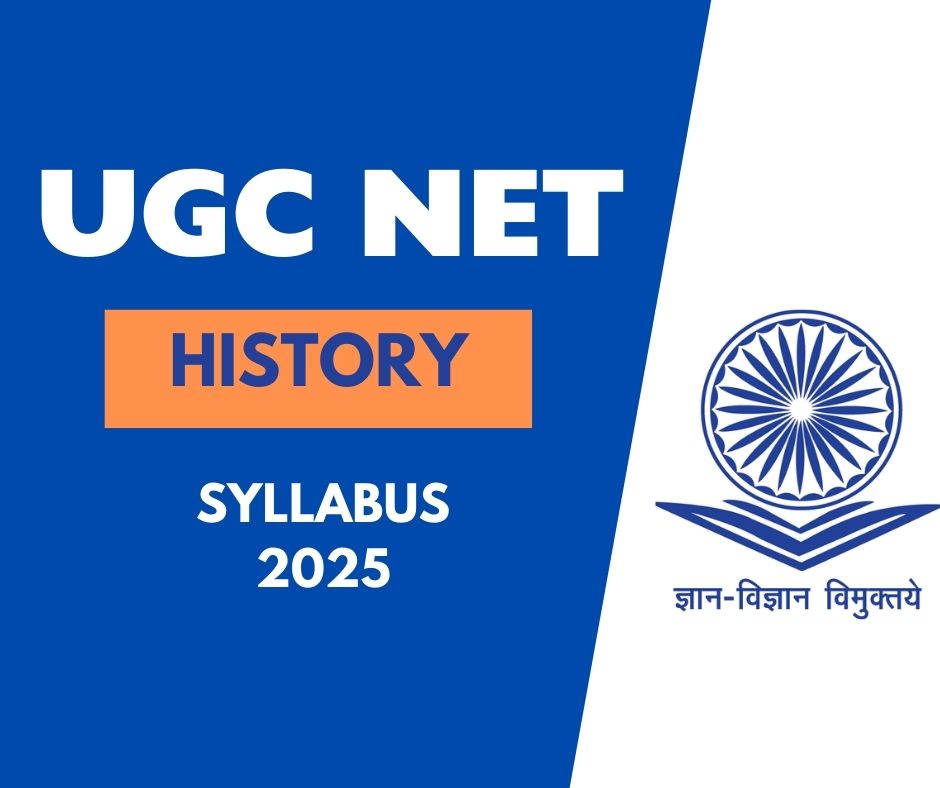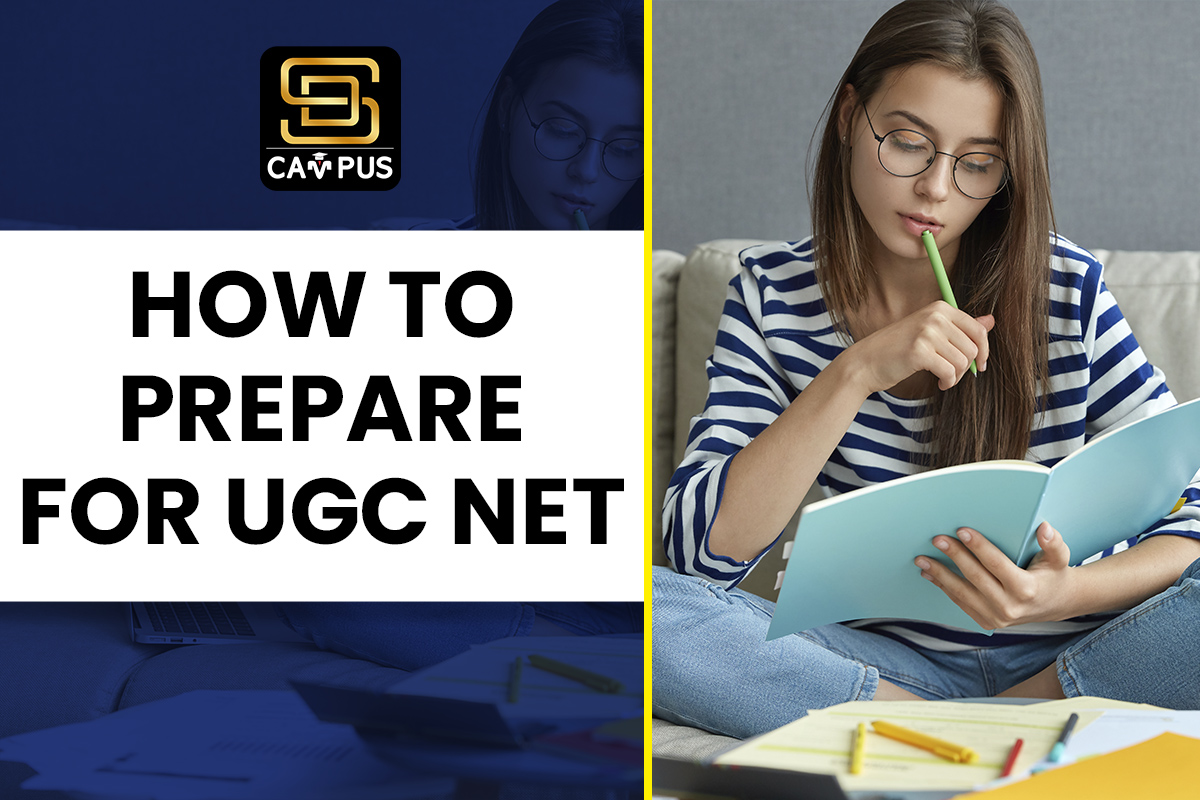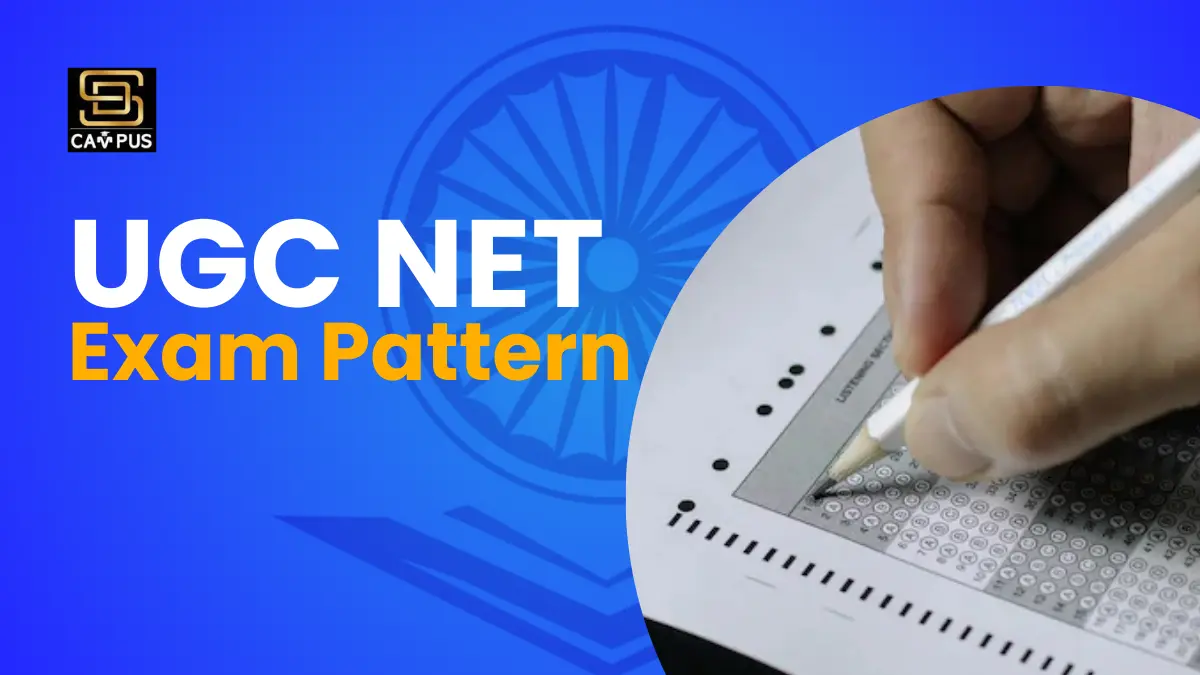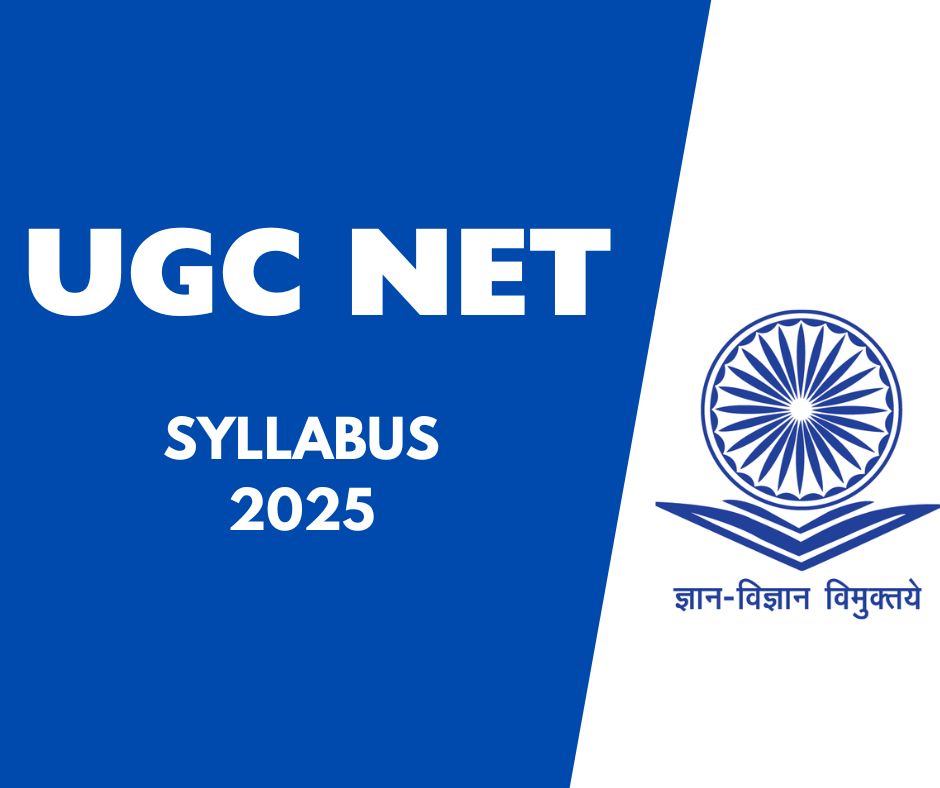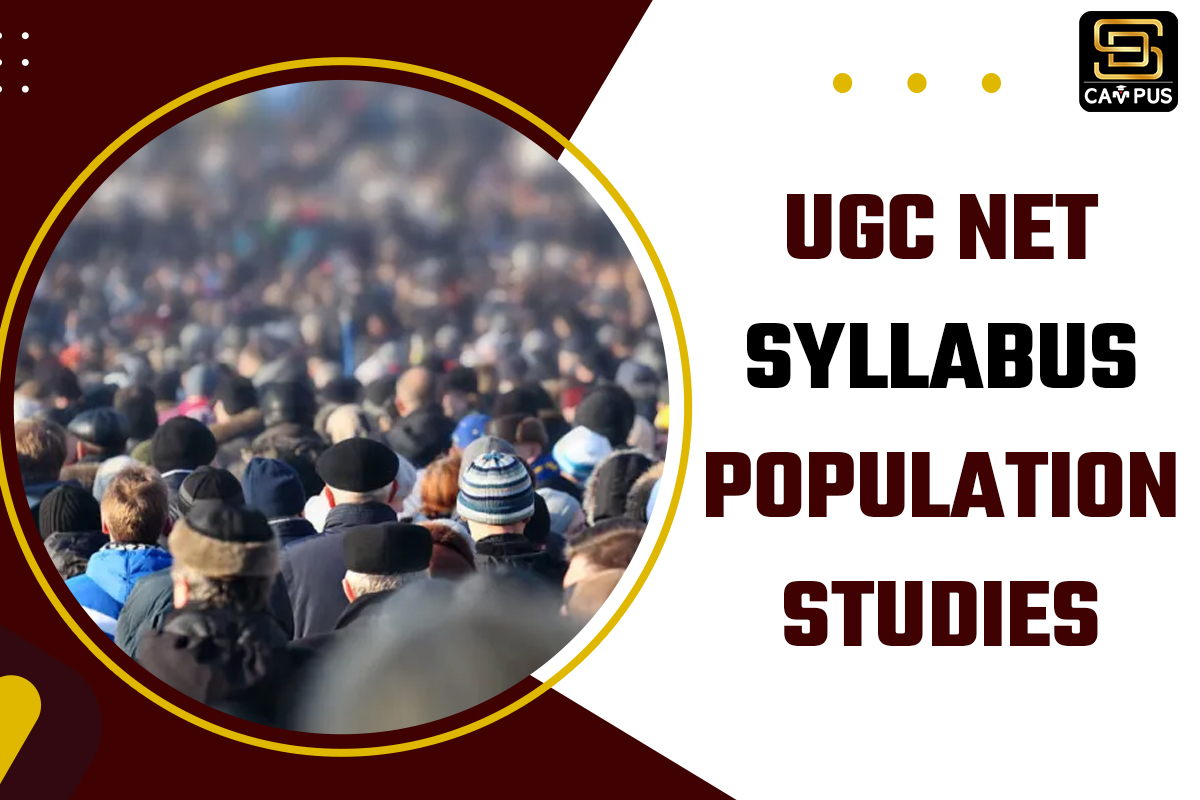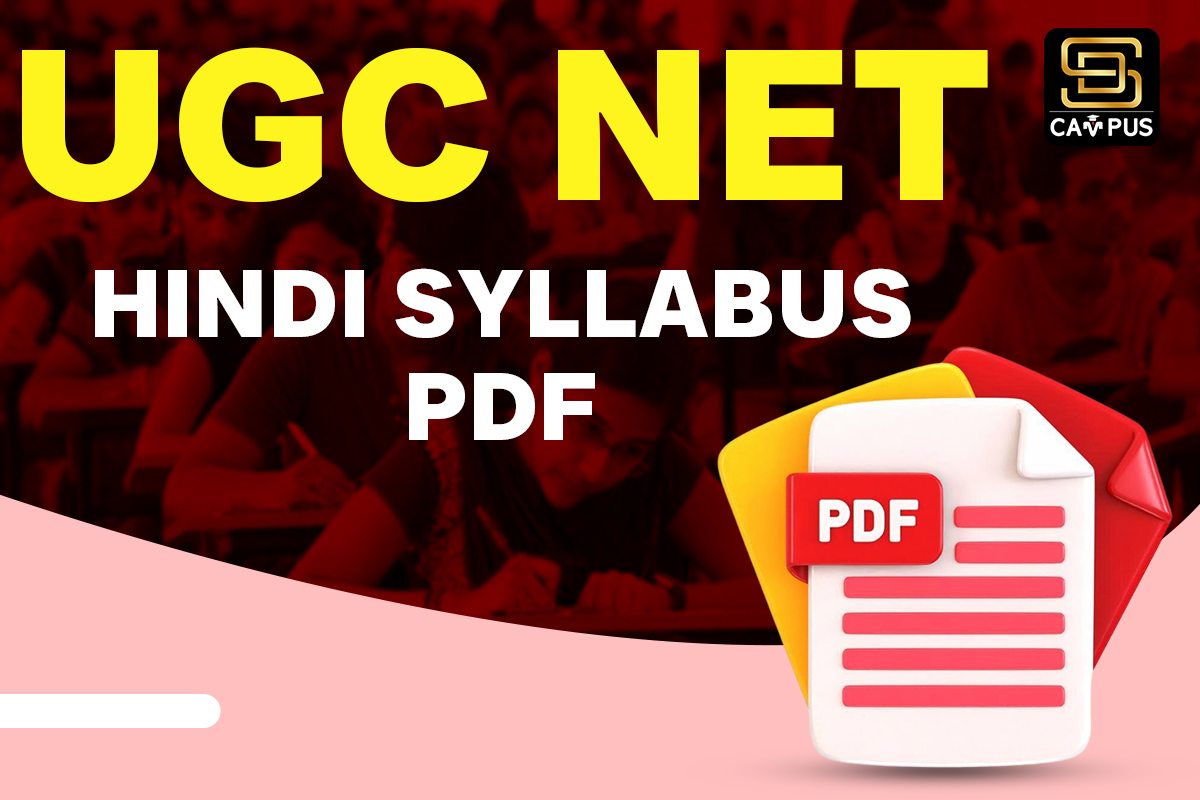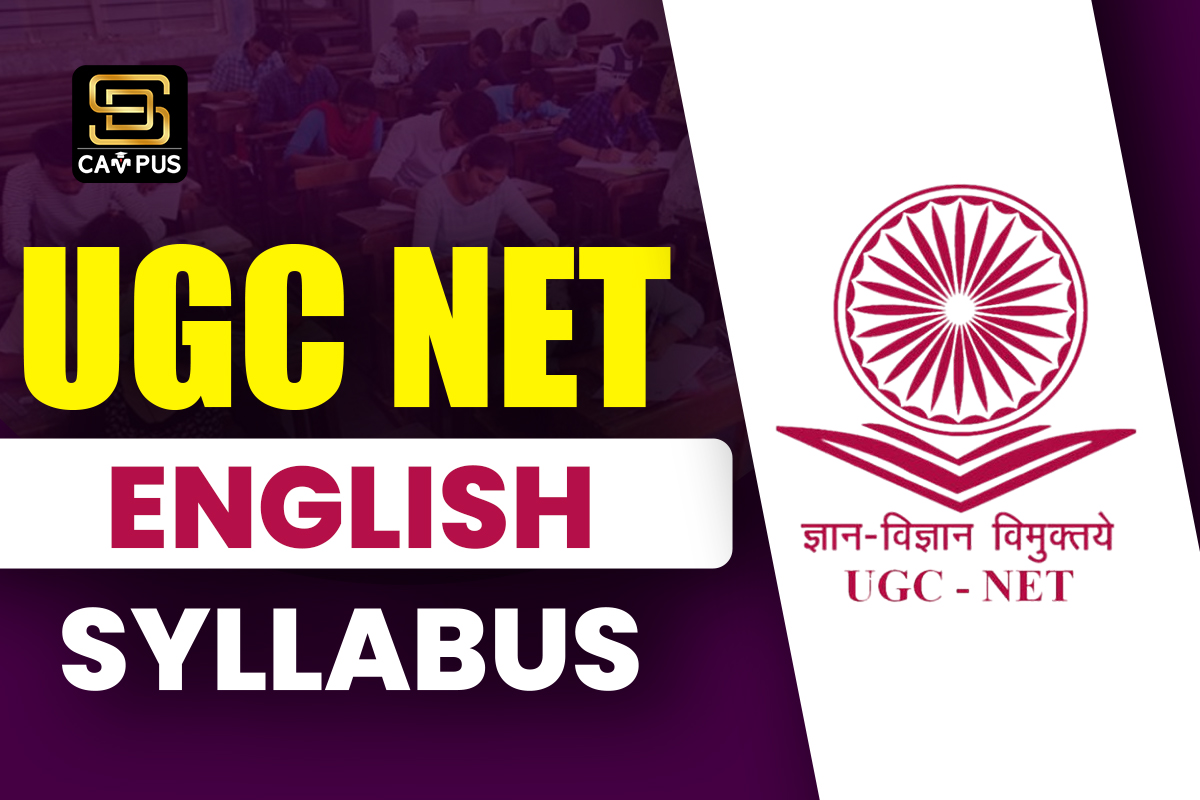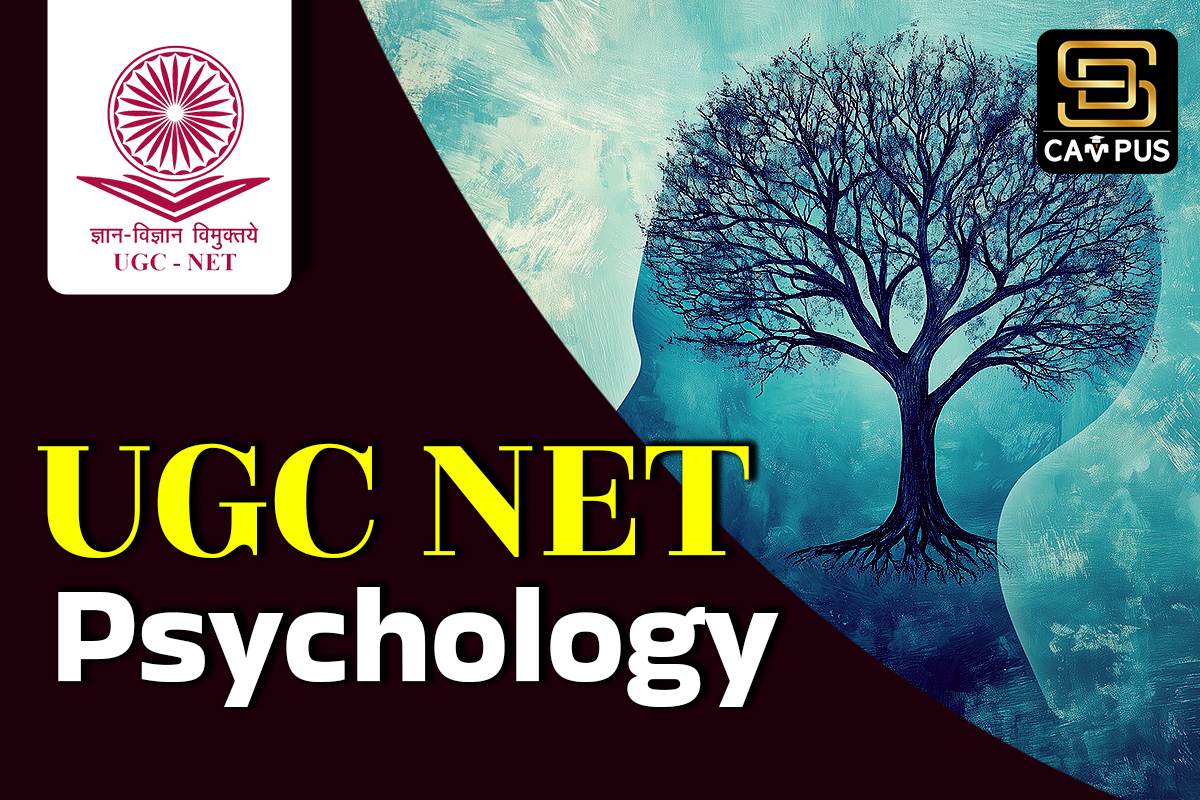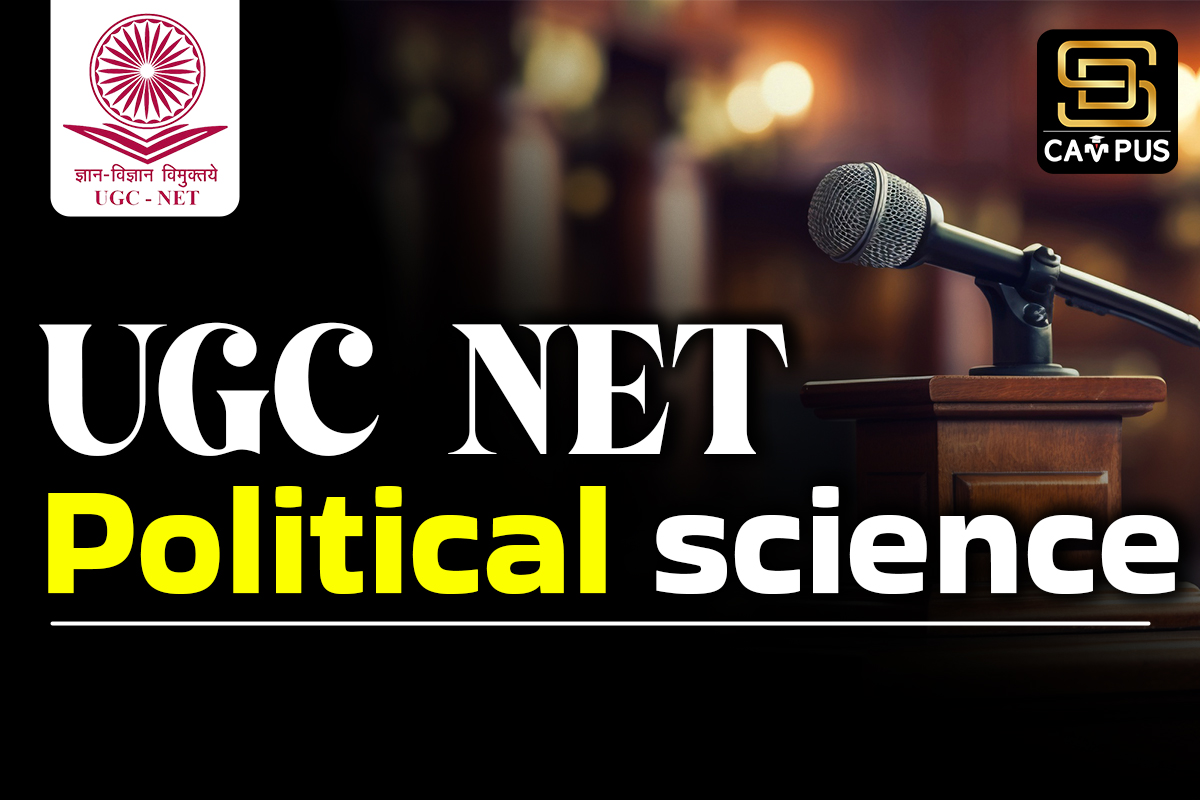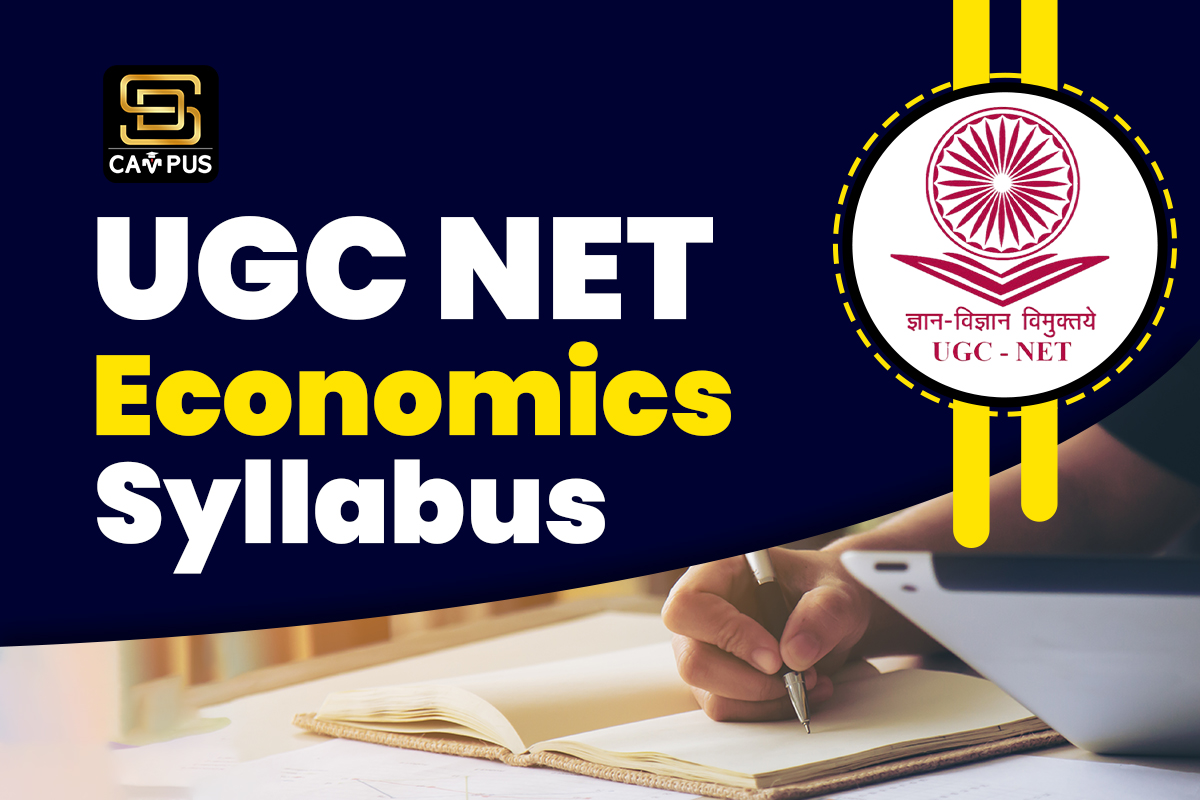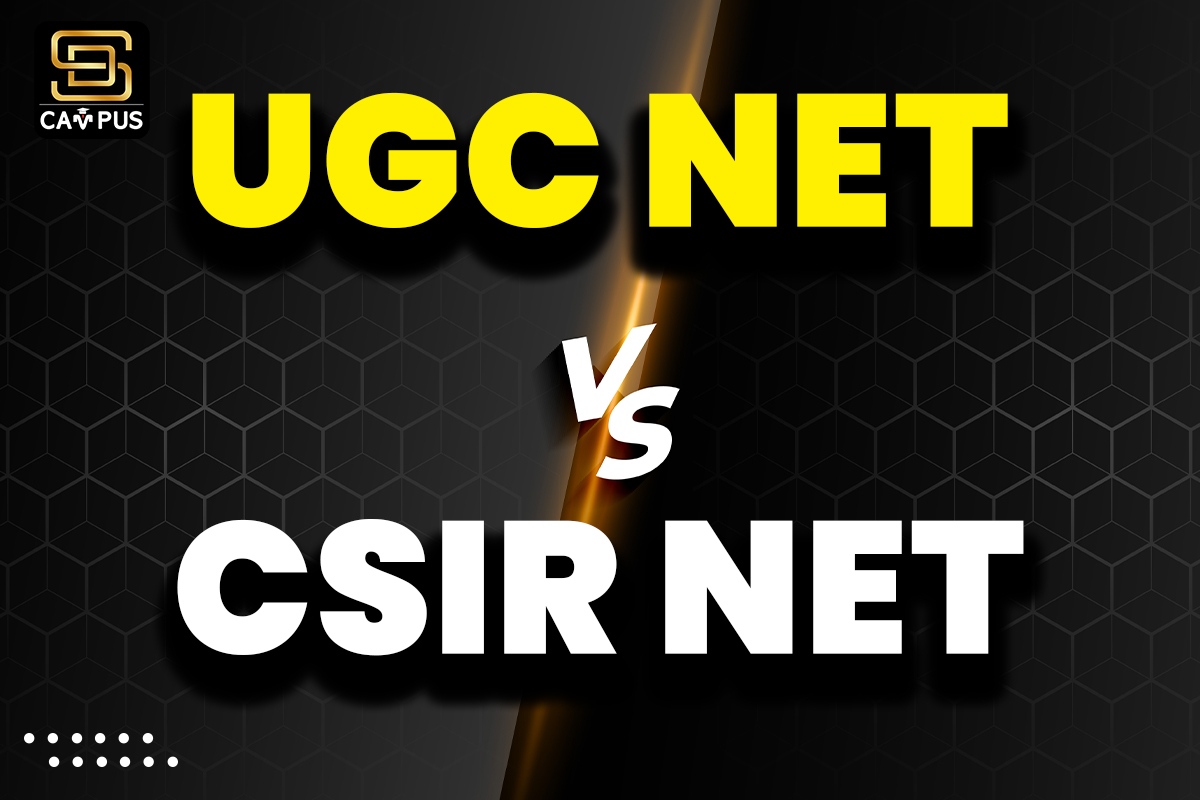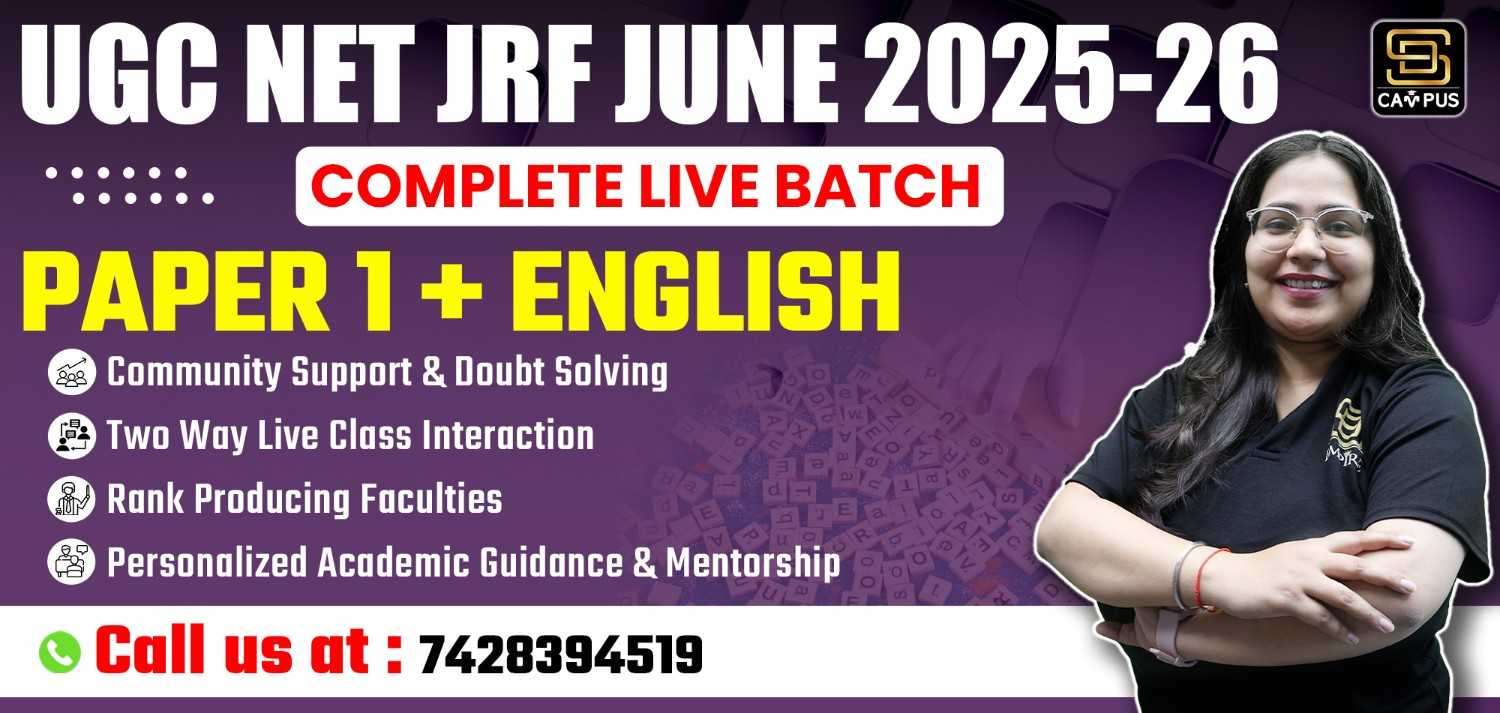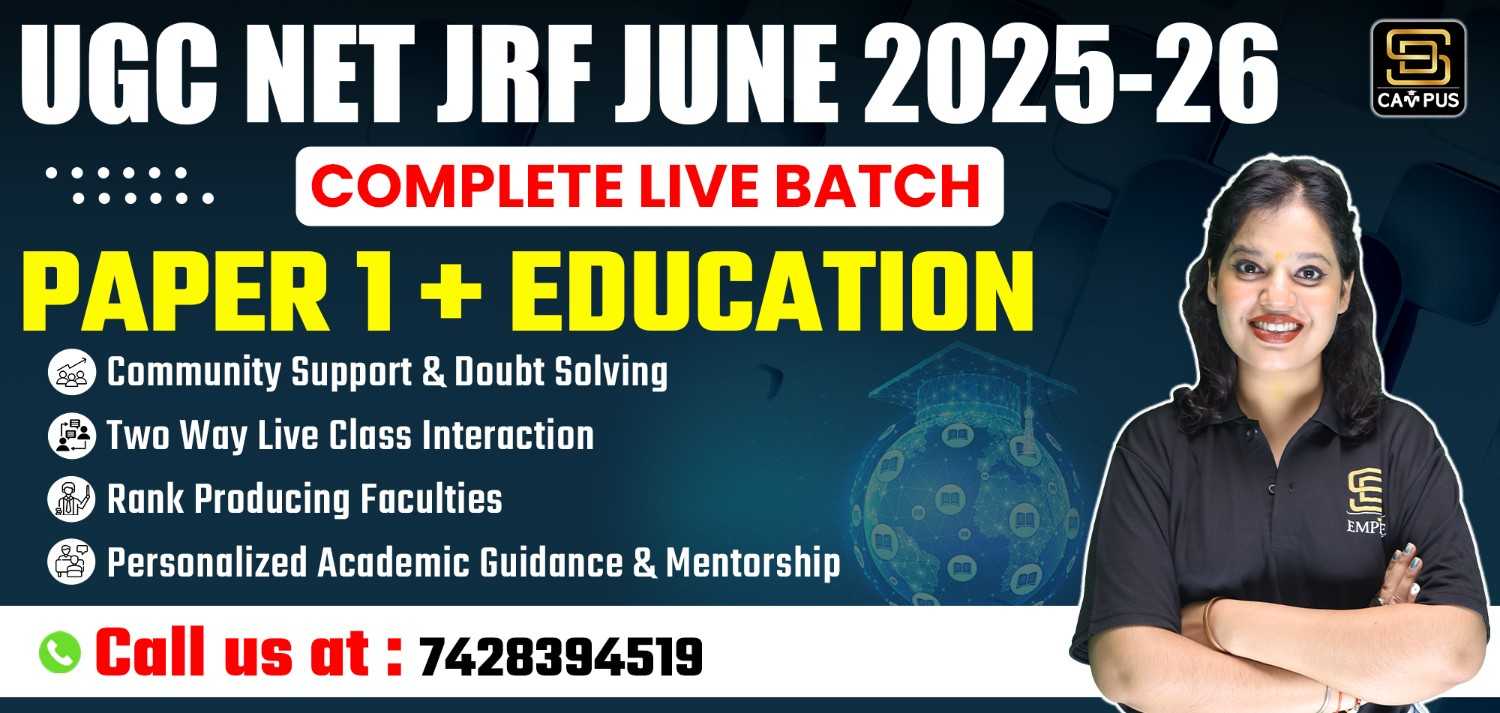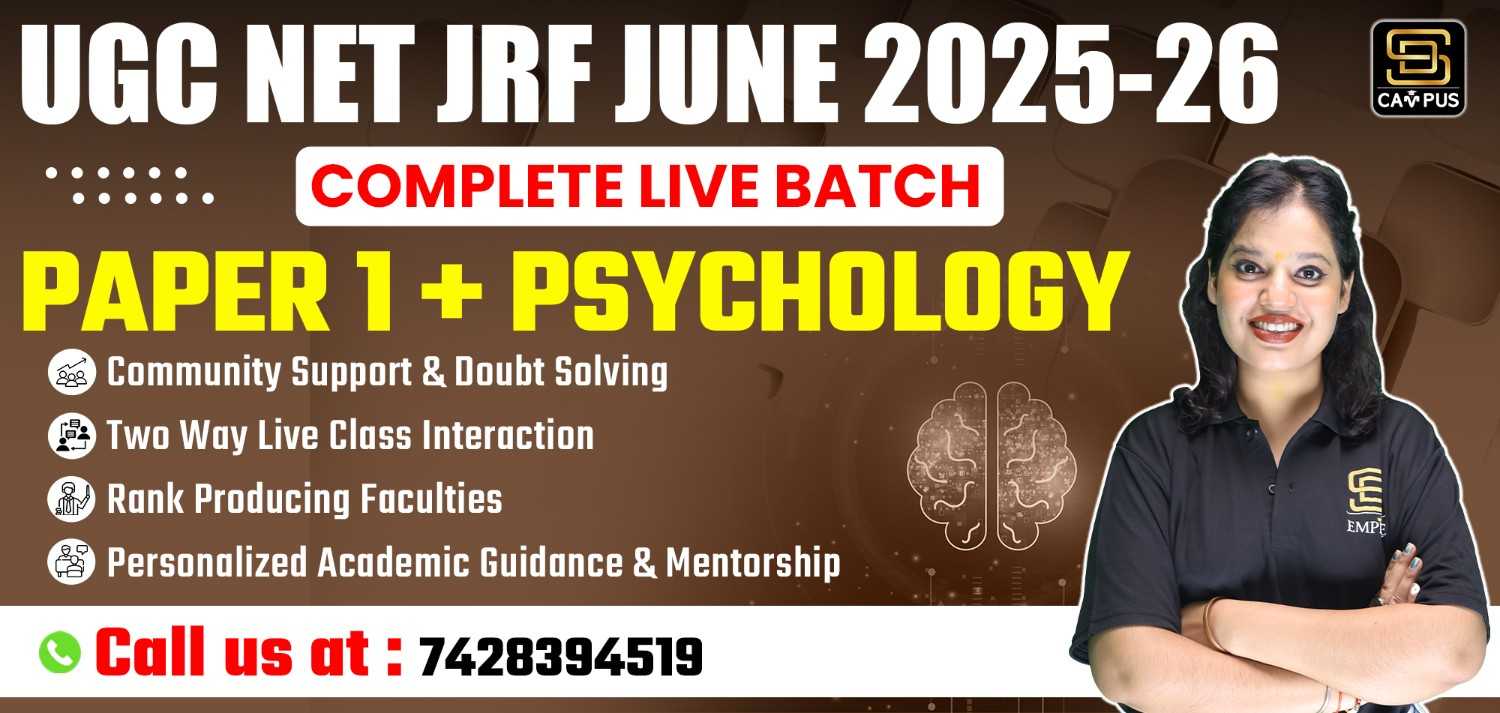Table of Contents
ToggleH1: UGC NET History Syllabus Download PDF: Paper 1 and Paper 2
UGC NET History Syllabus is released by the University Grants Commission for the UGC NET aspirants. It is available in both Hindi and English, so the candidates from both mediums don’t face issues.
Read the article to discover the detailed UGC NET 2025 History syllabus for Paper 1 and Paper 2. Additionally, learn how to download the UGC net syllabus PDF.
UGC NET History Syllabus Overview
Here is the overview of the UGC NET history exam 2025:
| Exam Name | UGC NET History |
| Exam Conducting Body | National Testing Agency |
| Post |
|
| Exam Level | National Level |
| Exam frequency | Twice (June and December) |
| Mode of Exam | Online |
| Medium of Exam | English and Hindi |
| Time Duration | 3 Hours |
| Number of Papers | Paper 1: General
Paper 2: Commerce Subject |
| Total Marks | Paper 1: 100 marks
Paper 2: 200 marks |
| Official Website | ugcnet.nta.nic.in |
UGC NET History Syllabus Paper 1
Paper 1 is mandatory for UGC NET aspirants who choose History as an optional. Here are the topics of the UGC NET history syllabus paper 1:
| Unit | Topic | Details |
| 1 | Teaching Aptitude | Concept, Objectives, Levels of Teaching
Factors affecting teaching: Teacher, Learner, Support material, Instructional facilities, Learning environment, and Institution. Methods of teaching in Institutions of higher learning. Teaching Support System: Traditional, Modern, and ICT-based. Evaluation Systems: Elements and Types of Evaluation, Evaluation in Choice-Based Credit System |
| 2 | Research Aptitude | Research: Meaning, Types, and Characteristics, Positivism and Postpositivistic approach to research. Methods of Research: Experimental, Descriptive, Historical, Qualitative, and Quantitative Methods.
Steps of Research. Thesis and Article writing: Format and styles of referencing. Application of ICT in research. Research ethics |
| 3 | Comprehension | A passage of text is given. Questions are asked about the passage to be answered. |
| 4 | Communication | Communication: Meaning, types, and characteristics of communication. Effective communication: Verbal and Non-verbal, Inter-Cultural and group communications, Classroom communication.
Barriers to effective communication. Mass-Media and Society. |
| 5 | Mathematical Reasoning and Aptitude | Types of reasoning.
Number series, Letter series, Codes, and Relationships. Mathematical Aptitude (Fraction, Time & Distance, Ratio, Proportion and Percentage, Profit and Loss, Interest and Discounting, Average |
| 6 | Logical Reasoning | Understanding the structure of arguments: argument forms, the structure of categorical propositions, Mood and Figure, Formal and Informal fallacies, Uses of language, Connotations, and denotations of terms, Classical square of opposition. Evaluating and distinguishing deductive and inductive reasoning.
Analogies. Venn diagram: Simple and multiple uses for establishing the validity of arguments. Indian Logic: Means of knowledge. Pramanas: Pratyaksha (Perception), Anumana (Inference), Upamana (Comparison), Shabda (Verbal testimony), Arthapatti (Implication), and Anupalabddhi (Non-apprehension). Structure and kinds of Anumana (inference), Vyapti (invariable relation), Hetvabhasas (fallacies of inference). |
| 7 | Data Interpretation | Sources, acquisition, and classification of Data. Quantitative and Qualitative Data. Graphical representation (Bar-chart, Histograms, Pie-chart, Table-chart, and Line-chart) and mapping of Data. Data Interpretation. Data and Governance. |
| 8 | Information and Communication Technology (ICT) | ICT: General abbreviations and terminology. Basics of Internet, Intranet, E-mail, Audio and Video-conferencing. Digital initiatives in higher education. ICT and Governance. |
| 9 | People, Development and Environment | Development and environment: Millennium Development and Sustainable Development Goals. Human and environment interaction: Anthropogenic activities and their impacts on the environment.
Environmental issues: Local, Regional, and Global; Air pollution, Water pollution, Soil pollution, Noise pollution, Waste (solid, liquid, biomedical, hazardous, electronic), Climate change and its Socio-Economic and Political dimensions. Impacts of pollutants on human health. Natural and energy resources: Solar, Wind, Soil, Hydro, Geothermal, Biomass, Nuclear, and Forests. Natural hazards and disasters: Mitigation strategies. Environmental Protection Act (1986), National Action Plan on Climate Change, International agreements/efforts -Montreal Protocol, Rio Summit, Convention on Biodiversity, Kyoto Protocol, Paris Agreement, International Solar Alliance. |
| 10 | Higher Education System | Institutions of higher learning and education in ancient India. Evolution of higher learning and research in post-independence India.
Oriental, Conventional, and Non-conventional learning programmes in India. Professional, Technical, and Skill-based education. Value education and environmental education. Policies, Governance, and Administration. |
UGC NET History Syllabus Paper 2
UGC NET history syllabus paper 2 detailed topics are given in the table below:
| Unit | Topic | Details |
| 1 | Negotiating the Sources | Archaeological sources: Exploration, Excavation,
Epigraphy and Numismatics. Dating of Archaeological Sites. Literary Sources: Indigenous Literature: Primary and Secondary: problem of dating Religious and Secular Literature, Myths, Legends, etc. Foreign Accounts: Greek, Chinese, and Arabic. Pastoralism and Food Production: Neolithic and Chalcolithic Phase: Settlement, distribution, tools, and patterns of exchange. Indus/Harappa Civilization: Origin, extent, major sites, settlement pattern, craft specialization, religion, society, and polity, Decline of Indus Civilization, Internal and external trade, the First urbanization in India. Vedic and later Vedic periods; Aryan debates, Political and Social Institutions, State Structure and Theories of State; Emergence of Varnas and Social Stratification, Religious and Philosophical Ideas. Introduction of Iron Technology, Megaliths of South India. Expansion of the State system: Mahajanapadas, Monarchical and Republican States, Economic and Social Developments and Emergence of Second Urbanization in the sixth century BCE; Emergence of heterodox sects- Jainism, Buddhism, and Ajivikas |
| 2 | From State to Empire | Rise of Magadha, Greek invasion under Alexander and its effects, Mauryan expansion, Mauryan polity, society, economy, Asoka’s Dhamma and its Nature, Decline, and Disintegration of the Mauryan Empire, Mauryan art and architecture, Asokan edicts: language and script.
Dissolution of Empire and Emergence of Regional Powers: Indo-Greeks, Sungas, Satavahanas, Kushanas and Saka-Ksatrapas, Sangam literature, polity and society in South India as reflected in Sangam literature. Trade and commerce from 2nd century BCE to 3rd century CE, Trade with the Roman World, Emergence of Mahayana Buddhism, Kharavela and Jainism, Post-Mauryan art and Architecture. Gandhara, Mathura and Amaravati schools. Gupta Vakataka age: Polity and Society, Agrarian Economy, Land Grants, Land Revenue and Land Rights, Gupta Coins, Beginning of Temple Architecture, Emergence of Puranic Hinduism, Development of Sanskrit Language and Literature. Developments in Science, Technology, Astronomy, Mathematics, and Medicine. Harsha and his Times: Administration and Religion. Salankayanas and Visnukundins in Andhradesa. |
| 3 | Emergence of Regional Kingdoms | Kingdoms in Deccan: Gangas, Kadmabas, Western and Eastern Chalukyas, Rashtrakutas, Kalyani Chalukyas, Kakatiyas, Hoysalas and Yadavas. Kingdoms in South India: Pallavas, Ceras, Colas, and Pandyas, Kingdoms in Eastern India: Palas and Senas of Bengal, Varmans of Kamarupa, Bhaumakaras and Somavamsis of Odisha.
Kingdoms in Western India: Maitrakas of Vallabhi and Chalukyas of Gujarat. Kingdoms in North India: Gurjara-Pratiharas, Kalacuri-Chedis, Gahadavalas and Paramaras. Characteristics of Early Medieval India: Administration and Political Structure Legitimation of Kingship. Agrarian economy: land grants, changing production relations; graded land rights and peasantry, water resources, taxation system, coins, and currency system; Trade and urbanization: patterns of trade, and urban settlements, ports and trade routes, merchandise and exchange, trade guilds; trade and colonization in Southeast Asia. Growth of Brahminical religions: Vaisnavism and Saivism; Temples; Patronage and Regional Ramification; Temple Architecture and Regional Styles. Dana, Tirtha, and Bhakti, Tamil Bhakti movement – Shankara, Madhava, and Ramanujacharya. Society: Varna, Jati and Proliferation of Castes, Position of women; Gender, marriage and property relations; Women in public life. Tribes as peasants and their place in the Varna order. Untouchability. Education and Educational Institutions: Agraharas, Mathas, and Mahaviharas as Centres of Education. Growth of Regional Languages. -4- Debates of state formation in early medieval India: A) Feudal model; B) Segmentary model; C) Integrative model. ] Arab contracts: Suleiman Ghaznavid conquests. Alberuni’s Accounts. |
| 4 | Source of Medieval Indian History | Archaeological, Epigraphic and Numismatic sources, Material evidences and Monuments; Chronicles; Literary sources – Persian, Sanskrit and Regional languages; Daftar Khannas: Firmans, Bahis / Pothis / Akhbarat; Foreign Travellers’ Accounts – Persian and Arabic. Political Developments – The Delhi Sultanate – the Ghorids, the Turks, the Khaljis, the Tughlaqs, the Sayyids, and the Lodis.
Decline of the Delhi Sultanate. Foundation of the Mughal Empire – Babur, Humayun and the Suris; Expansion and Consolidation from Akbar to Aurangzeb. Decline of the Mughal Empire. Later Mughals and Disintegration of the Mughal Empire. The Vijayanagara and the Bahmanis – Deccan Sultanate; Bijapur, Golkonda, Bidar, Berar and Ahmadnagar – Rise, Expansion and Disintegration; Eastern Gangas and Suryavamshi Gajapatis. Rise of the Marathas & the foundation of Swaraj by Shivaji; its expansion under the Peshwas; Mughal–Maratha relations, Maratha Confederacy, Causes of Decline. |
| 5 | Administration & Economy | Administration under the Sultanate, Nature of State – Theocratic and Theocentric, Central, Provincial and Local Administration, Law of succession. Sher Shah’s Administrative Reforms; Mughal Administration – Central, Provincial, and Local: Mansabdari and Jagirdari Systems.
Administrative System in the Deccan – The Vijayanagara State & Polity, Bahamani Administrative System; Maratha Administration – Asta Pradhan. Frontier Policies under Delhi Sultanate and Mughals. Inter-State Relations during the Sultanate and the Mughals. Agricultural Production and Irrigation System, Village Economy, Peasantry, Grants and Agricultural Loans, Urbanization and Demographic Structure. Industries – Cotton Textiles, Handicrafts, Agro-Based industries, Organisation, Factories & Technology. Trade and Commerce – State Policies, Internal and External Trade: European Trade, Trade Centres and Ports, Transport and Communication. Hundi (Bills of Exchange) and Insurance, State Income and Expenditure, Currency, Mint System; Famines and Peasant Revolts. |
| 6 | Society and Culture: Social Organisation and Social Structure. | The Sufis – Their Orders, Beliefs and Practices, the leading Sufi Saints, Social Synchronization. Bhakti Movement – Shaivism; Vaishnavism, Shaktism. The Saints of the Medieval Period – North and South – Their Impact on SocioPolitical and Religious Life – Women Saints of Medieval India. The Sikh Movement – Guru Nanak Dev: his teachings and practices, Adi Granth; the Khalsa.
Social Classification: Ruling Class, Major Religious Groups, the Ulemas, the Mercantile and Professional Classes – Rajput Society. Rural society – Petty Chieftains, Village Officials, Cultivators and Non-Cultivating Classes, Artisans. Position of Women – Zanana System – Devadasi System. Development of Education, Centres of Education and Curriculum, Madarasa Education. Fine Arts – Major Schools of Painting – Mughal, Rajasthani, Pahari, Garhwali; Development of Music. Art and Architecture, Indo-Islamic Architecture, Mughal Architecture, Regional Styles. Indo-Arabic Architecture, Mughal Gardens, Maratha Forts, Shrines and Temples. |
| 7 | Sources of Modern Indian History | Archieval Materials, Biographies and Memoirs, Newspapers, Oral Evidence, Creative Literature, Paintings, Monuments, and Coins. Rise of British Power: European Traders in India in the 16th to 18th Centuries – Portuguese, Dutch, French, and the British. Establishment and Expansion of British Dominion in India. -6- British Relations with Principal Indian States – Bengal, Oudh, Hyderabad, Mysore, Carnatic and Punjab.
Revolt of 1857, Causes, Nature and Impact. Administration of the Company and the Crown; Evolution of Central and Provincial Structure under East India Company. Paramountcy, Civil Service, Judiciary, Police, and the Army under the Company; British Policy and Paramountcy in the Princely States under the Crown. Local Self-Government. Constitutional Changes, 1909 – 1935. |
| 8 | Colonial Economy | Changing Composition, Volume, and Direction of Trade. Expansion and Commercialization of Agriculture, Land Rights, Land Settlements, Rural Indebtedness, Landless Labour, Irrigation and Canal System. Decline of Industries – Changing Socio-Economic Conditions of Artisans; De-urbanisation; Economic Drain; World Wars and Economy. British Industrial Policy; Major Modern Industries; Nature of Factory Legislation; Labour and Trade Union Movements.
Monetary Policy, Banking, Currency and Exchange, Railways and Road Transport, Communications – Post & Telegraph. Growth of New Urban Centres; New Features of Town Planning and Architecture, Urban Society and Urban Problems. Famines, Epidemics, and the Government Policy. Tribal and Peasant Movements. Indian Society in Transition: Contact with Christianity – the Missions and Missionaries; Critique of Indian Social and Economic Practices and Religious Beliefs; Educational and Other Activities. The New Education – Government Policy; Levels and Contents; English Language; Development of Science, Technology, Public Health & Medicine – Towards Modernism. Indian Renaissance – Socio-Religious Reforms; Emergence of Middle Class; Caste Associations and Caste Mobility. -7- Women’s Question – Nationalist Discourse; Women’s Organisations; British Legislation concerning Women, Gender Identity & Constitutional Position. The Printing Press – Journalistic Activity and the Public Opinion. Modernisation of Indian Languages and Literary Forms – Reorientation in Painting, Music and Performing Arts. |
| 9 | Rise of Indian Nationalism | Social and Economic Basis of Nationalism. Birth of Indian National Congress; Ideologies and Programmes of the Indian National Congress, 1885-1920: Early Nationalists, Assertive Nationalists and Revolutionaries. Swadeshi and Swaraj. Gandhian Mass Movements; Subhas Chandra Bose and INA; Role of Middle Class in National Movement; Women Participation in National Movement. Left Wing Politics. Depressed Class Movement.
Communal Politics: Muslim League and Genesis of Pakistan. Towards Independence and Partition. India after Independence: Challenges of Partition; Integration of the Indian Princely States; Kashmir, Hyderabad & Junagarh. B.R. Ambedkar – The Making of the Indian Constitution, its Features. The Structure of Bureaucracy. New Education Policy. Economic Policies and the Planning Process: Development, Displacement and Tribal Issues. Linguistic Reorganisation of States; Centre-State Relations. Foreign Policy Initiatives – Panchsheel; Dynamics of Indian Politics-Emergency; Liberalisation, Privatisation & Globalisation of Indian Economy. |
| 10 | Historical Method, Research, Methodology and Historiography | Scope and Importance of History Objectivity and Bias in History Heuristics Operation, Criticism in History, Synthesis and Presentation History and its Auxiliary Sciences History as a Science, Arts or a Social Science Causation and Imagination in History Significance of Regional History Recent
Trends of Indian History Research Methodology Hypothesis in History Area of Proposed Research Sources – Data Collection, Primary / Secondary, Original and Transit Sources Trends in Historical Research Recent Indian Historiography Selection of Topic in History Notes Taking, References, Footnotes and Bibliography Thesis and Assignment Writing Plagiarism, Intellectual Dishonesty and History Writing Beginnings of Historical Writings – Greek, Roman and Church Historiography Renaissance and its Impact on History Writing Negative and Positive Schools of Historical Writing, Berlin Revolution in History Writing – Von Ranke, Marxist Philosophy of History – Scientific Materialism, Cyclical Theory of History – Oswald Spengler, Challenge and Response Theory – Arnold Joseph Toynbee, Post Modernism in History |
UGC NET History Syllabus PDF
UGC NET History Syllabus PDF is available to download for all the candidates. It has the syllabus details for paper one and paper 2. Candidates can download the PDF format of the syllabus for reference during the UGC NET exam preparation. To download the UGC NET 2025 History syllabus, click the link below.
UGC NET History Syllabus Exam Pattern
UGC NET History Syllabus Exam Pattern is as below, note that the exam pattern will guide you in the preparation and hence is important:
| Papers | No of Questions | Total Marks | Duration |
| Paper 1 | 50 | 100 | 3 Hours |
| Paper 2 | 100 | 200 | |
| Total | 150 | 300 |
UGC NET History Syllabus Marking Scheme
UGC NET history syllabus should be prepared after the candidates know the marking scheme for UGC NET 2025. The UGC national eligibility test follows a simple marking scheme; for every correct answer, candidates are awarded 2 marks in both papers (paper 1 and 2). There is no negative marking scheme in the NET exam.
To qualify for the UGC NET History 2025, candidates need to qualify in both papers separately. UR category candidates have to score at least 40 percent. Aspirants from the SC/ST category at least need to score 35 percent.
UGC NET 2025 History Preparation Tips and Tricks
UGC NET History syllabus may seem easy to cover, but the high competition makes it tough to score in the UGC exam. Therefore, to be sure of qualifying for the UGC NET, you need a smart study plan. Follow the tips below to get ahead of the competition:
- Read the syllabus and divide the topic into easy, moderate, and tough categories.
- Then view the exam pattern and note the number, types, and repeated questions in the exam.
- Use previous years’ questions to your advantage. Prepare the repeated questions as per the analysis.
- Practice sample papers regularly.
- In the end, practice time management and correct answer analysis with mock tests.
|
Related Articles |
|
| UGC NET Psychology Syllabus | UGC NET Hindi Syllabus |
Frequently Asked Questions
Ques 1: What are the total marks of the UGC NET history?
Ans 1: The UGC NET 2025 exam pattern involves 150 questions for 300 marks in total.
Ques 2: Is the UGC NET history exam easy?
Ans 2: The UGC NET exam difficulty can be stated as a moderate to easy level.
Ques 3: Can I clear the UGC NET exam history in one month’s preparation?
Ans 3: Yes. But that isn’t going to be an easy thing. You need to plan smartly and follow the plan.
Ques 4: How many papers are there in UGC NET for history?
Ans 4: There are a total of two papers. Paper 1 is general, and Paper 2 is history-specific.
Ques 5: Is paper 1 qualifying in nature in the UGC NET exam?
Ans 5: No. Both papers in the UGC NET exam are compulsory, and scores will be counted in the final merit.
Archna is a University of Delhi graduate. She has 2 years of experience as a Content Writer in education, finance, and tech writing. She aims to create informative, clear, and concise user-friendly content. For the SD campus, she writes for: Teaching exams, Government Jobs, and School Entrance exams.

